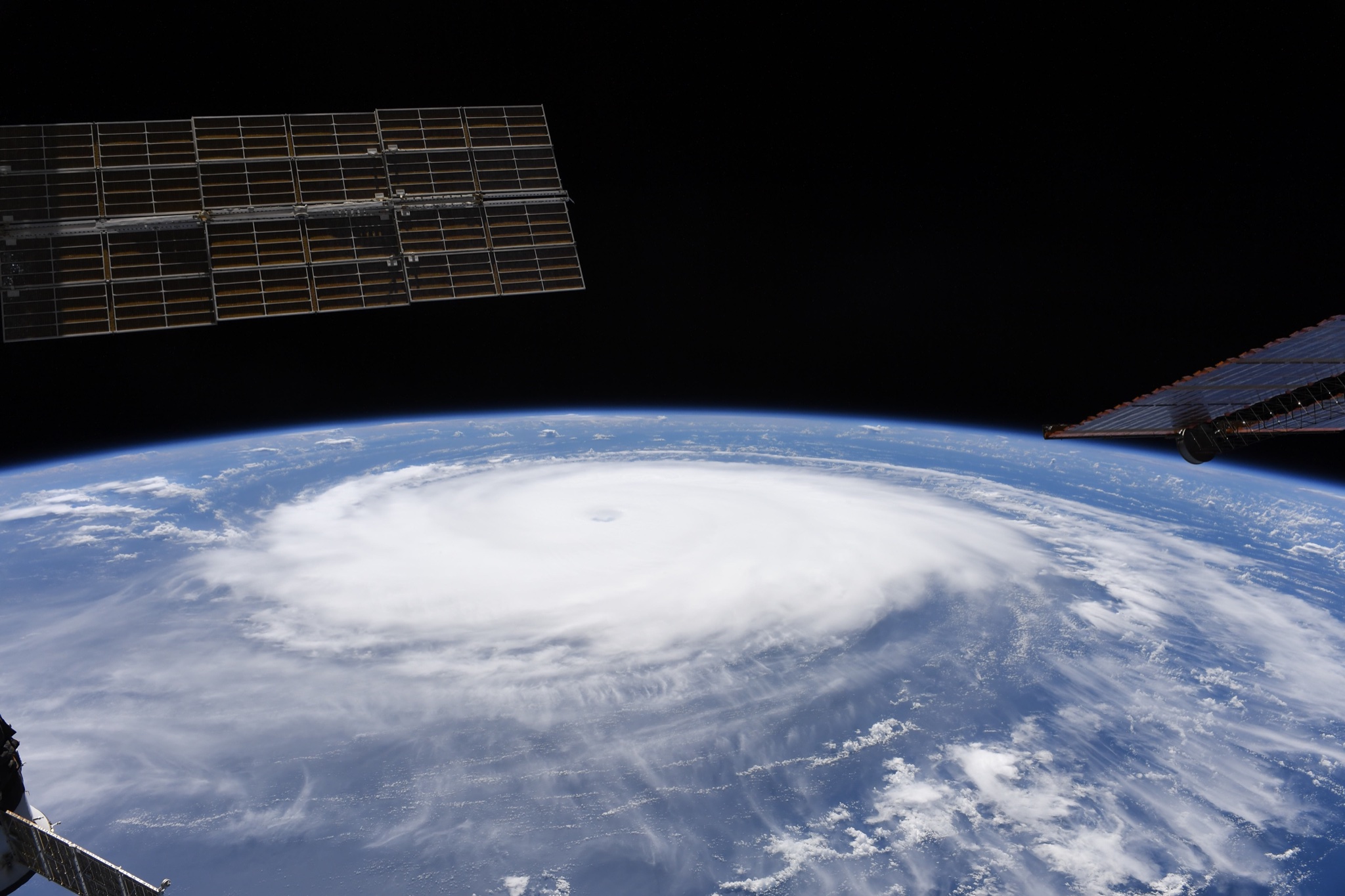Astronaut snaps stunning photos of massive Hurricane Sam from space
The storm is chugging over the Atlantic Ocean.

NASA astronaut Megan McArthur shared three photos of the massive Hurricane Sam as seen from the International Space Station, showing off the storm's vast clouds and distinct eye.
Fortunately, Hurricane Sam is chugging over the Atlantic Ocean without posing much of a threat to folks on land. Nevertheless, the duties of astronauts living and working in orbit regularly include photographing Earth from space, and there Sam is.
"Another hurricane? I do not like them, Sam I Am," McArthur wrote in a tweet posted Wednesday (Sept. 29), referencing the classic Dr. Seuss children's book, "Green Eggs and Ham."
Related: Hurricane Ida from space: Photos from astronauts and satellites
The storm is currently located east of Puerto Rico; the current forecast from the National Oceanic and Atmospheric Administration (NOAA)'s National Hurricane Center predicts the hurricane will also pass to the east of Bermuda early on Saturday (Oct. 2), then south of Canada's maritime provinces early on Monday (Oct. 4).
Currently, the only threat the center is emphasizing is the risk of high swells on Atlantic islands and the east coast of North America.
Hurricane Sam, which first formed about midway between South America and Africa on Sept. 22, formally became a tropical storm the next day, then rapidly intensified to become a full-fledged hurricane.
Breaking space news, the latest updates on rocket launches, skywatching events and more!
Currently, the storm is maintaining winds near 130 mph (215 kph), making it a Category 4 hurricane, although the National Hurricane Center expects that rating to fluctuate a little as the storm progresses.
Hurricane Sam is the 18th named tropical storm of this year's hurricane season, which began June 1 and ends Nov. 30. Only three more storm names remain in the standard list, but unlike last year, when later storms were named using letters of the Greek alphabet, this year there is a second list of more traditional names, beginning with Adria and ending with Will.
Although Hurricane Sam poses much less of a threat than have some of this year's other storms, such as Grace, Ida and Larry, it speaks to the severity of the overall 2021 hurricane season, which was predicted from the outset to be particularly difficult.
Hurricanes are just one weather phenomenon to display the impact of skyrocketing carbon emissions over the past decades. Although climate change does not cause specific storms, it increases the frequency of stronger storms by warming the waters that feed hurricanes and increasing the amount of water that air can hold. In addition, factors like rising sea levels leave people more vulnerable to the impacts of any given storm.
Email Meghan Bartels at mbartels@space.com or follow her on Twitter @meghanbartels. Follow us on Twitter @Spacedotcom and on Facebook.

Meghan is a senior writer at Space.com and has more than five years' experience as a science journalist based in New York City. She joined Space.com in July 2018, with previous writing published in outlets including Newsweek and Audubon. Meghan earned an MA in science journalism from New York University and a BA in classics from Georgetown University, and in her free time she enjoys reading and visiting museums. Follow her on Twitter at @meghanbartels.

